Anchor charts are a great tool to help support your instruction and get kids engaged in your lessons. But you may be wondering “Where do I begin?” and “Where do I get these anchor charts?” No worries! Here are my top tips for using anchor charts in your classroom.
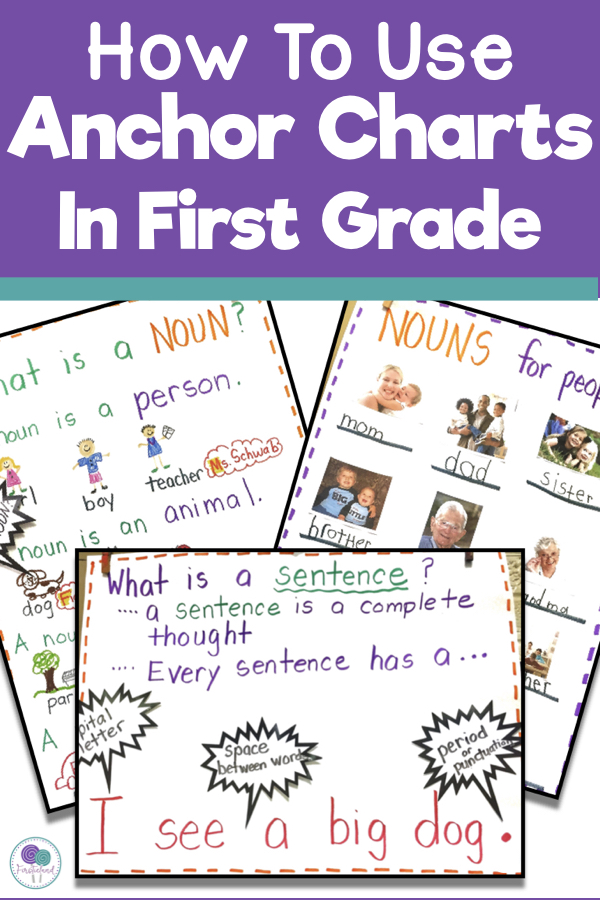
Why You Should Use Anchor Charts
Anchor charts are the perfect way to introduce a new concept to students and a great reminder of skills that have already been taught.
When I first started teaching, I would notice lots of posters and other visual aides at my local teacher store. I'd snatch them up and hang them all over my room, thinking my students were going to somehow absorb the information just by looking at these shiny posters. But, although they looked pretty and colorful, I noticed when I would hang these in my classroom the students rarely used them. I soon realized that these posters meant nothing to my students because they weren't involved or invested in them.
I decided I needed to find a way to get my students engaged in the creation of these charts instead of just hanging them around the room. That's when I started making and using anchor charts. At the time, Pinterest didn't exist and anchor charts didn't have a name. I just knew that if I got my students involved, learning would take place.
Anchor charts can be used to teach so many concepts from math, phonics, grammar skills, steps in a science procedure – the list is endless. But be cautious in your use of anchor charts because too many can cause your students to become confused and overwhelmed with information overload hanging all over your walls.
Be selective when choosing to make an anchor chart with your students. Think ahead about the foundational skills that you'll want to teach throughout the year. These are the skills you'll want to address with anchor charts.
How To Make Anchor Charts
Making anchor charts is a fairly simple process. All you really need is an idea, some chart paper and markers.

Anchor charts don't have to be fancy and you certainly don't have to be an artist. But there are a few things you should keep in mind.
Keep Them Simple
When you're creating charts as reference for young students in K-2, remember that simple is your friend. Students at this age are just learning to read so if you want kids to be able to use them you will need to keep words to a minimum.
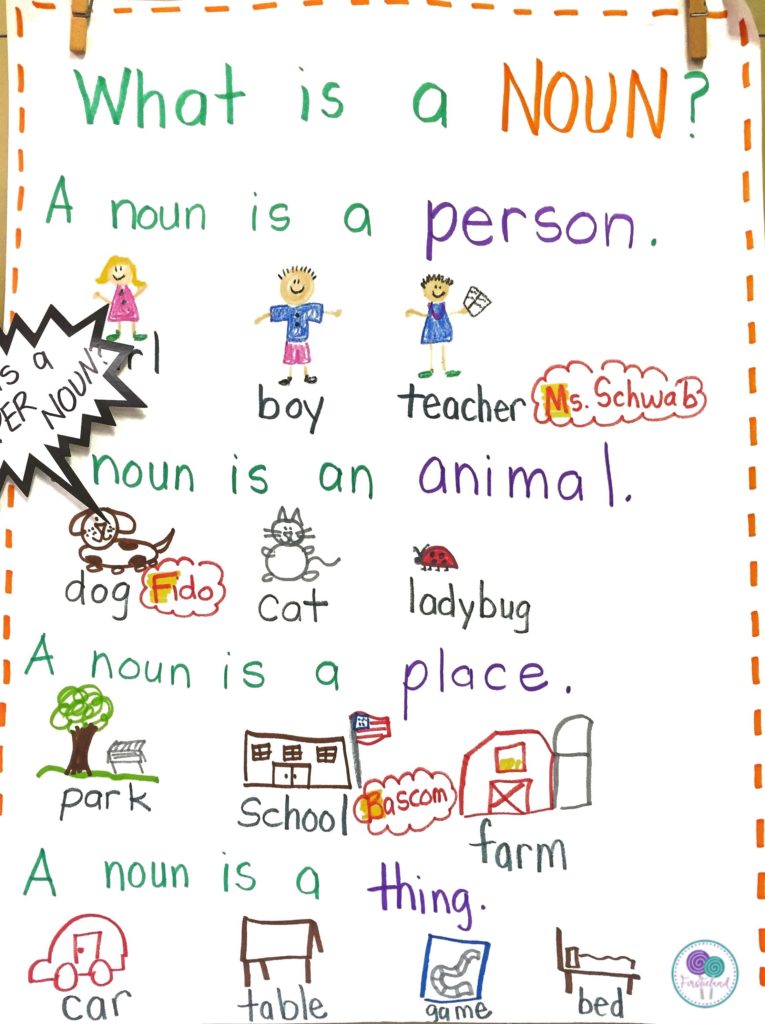
Make Your Charts Easy To Read
Use large, bold, block print when creating anchor charts for young students. Use dark colors for your print so they are easy to see from anywhere in the classroom.
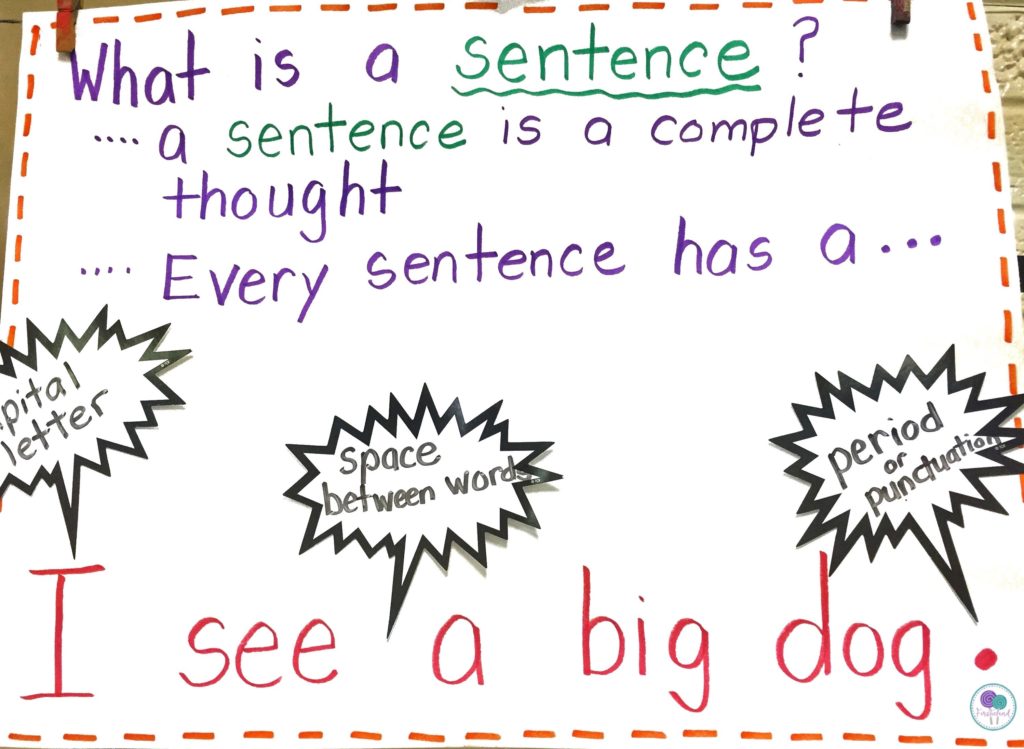
Make It Easy To Remember
When you're creating your anchor chart, add details to make it easy for students to remember. In this flexible seating rules chart I used different colors of marker so that I can tell students to “look at the red words” or “remember the green rule”.
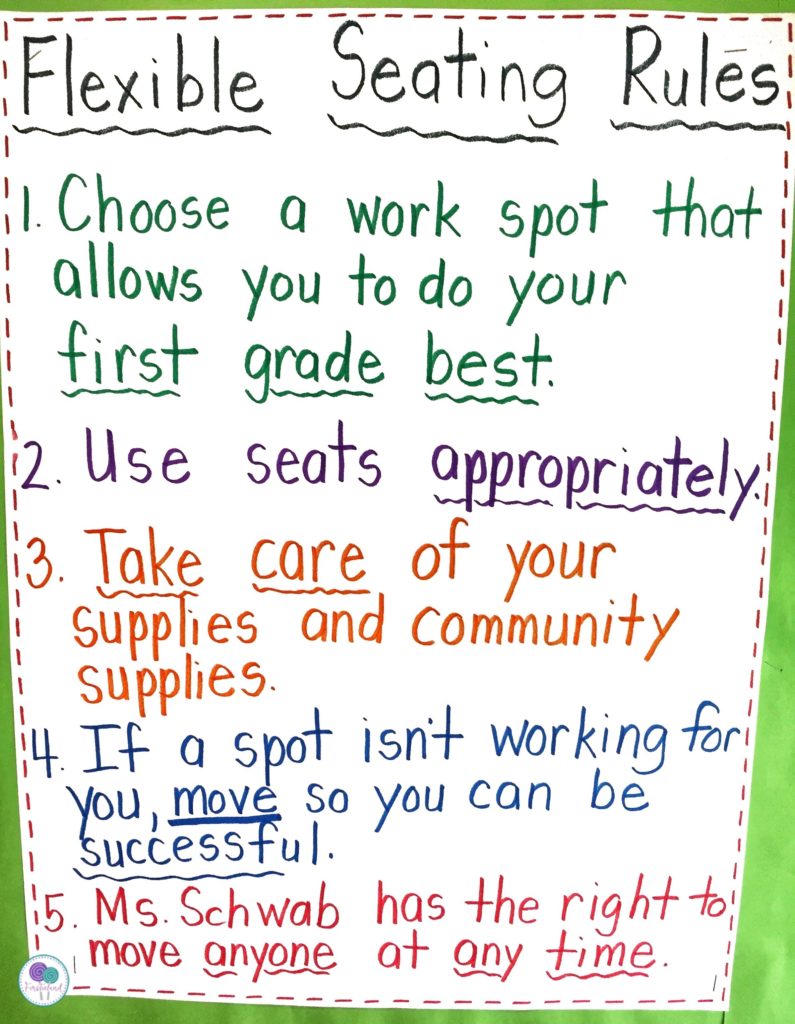
Add pictures or photographs that the students can remember for reference. On this anchor chart about Main Idea, I drew a pizza to help students remember that the main idea of a story is like the crust on the pizza. It's what holds the story together.
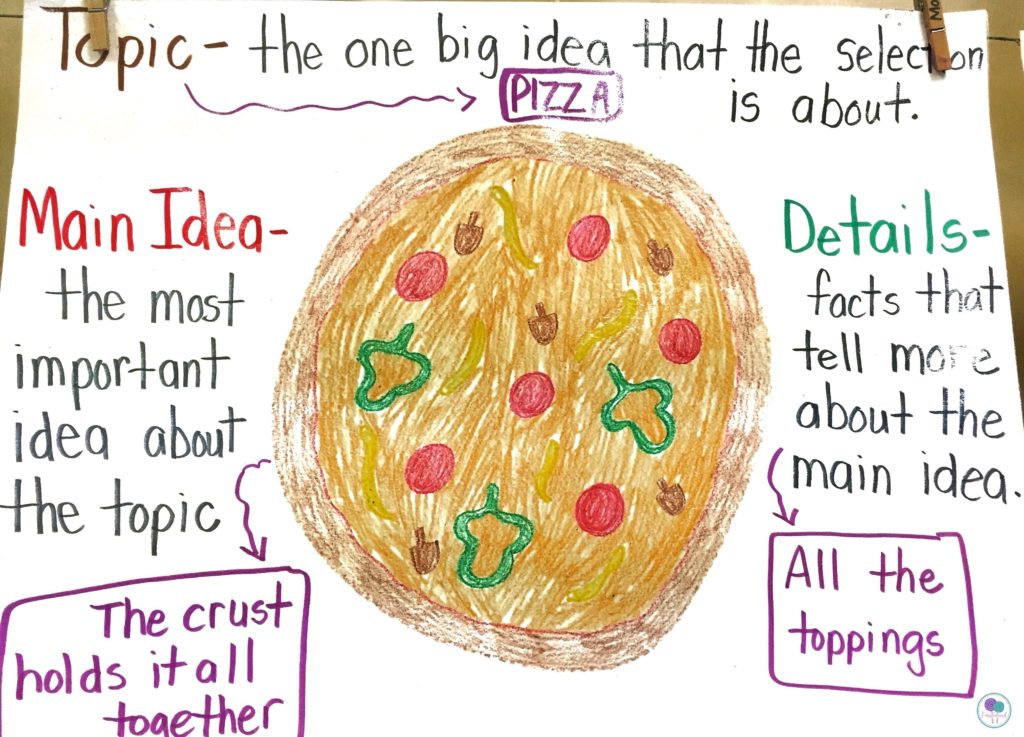
Making Charts With Your Students
Get your students engaged in their learning by having them help you make your anchor charts. My firsties are always involved in the process of making our charts through the use of interactive writing.
I start by preparing my chart ahead of time. I'll write the heading of the chart and add some simple drawings before we begin creating our chart. This speeds up the process and helps the students stay on task and engaged. Although it's important to keep your charts intriguing with color and pictures, your students will get bored watching you draw and color. So have that part of your chart completed ahead of time.
Have your students add words or sentences to the chart by letting them use the marker in interactive writing. Keep some masking tape or white correction tape on hand for any mistakes. We call it “boo boo” tape and don't worry about mistakes. That's what learning is all about!

What If You're Not An Artist?
Don't let your artistic ability stop you from making anchor charts with your students. Simple drawings and stick figures work fine! But if you still don't feel comfortable or simply don't have the time, I have you covered.
To be honest, I use many of the same grammar anchor charts every year in my classroom. Sometimes I get tired of drawing and creating them every year. But I still wanted my students to be involved in the process of making our charts.
So, I created some “make your own” charts to speed things up. They have all the cute graphics and headings but they also have space for you and your students to add all the important information on each topic.
I simply print them out on the poster setting of my printer, laminate them and use expo marker to write on them. That way, at the end of the year, I can wipe them clean and reuse again next year! It has saved me a ton of time and they look super cute in my room!
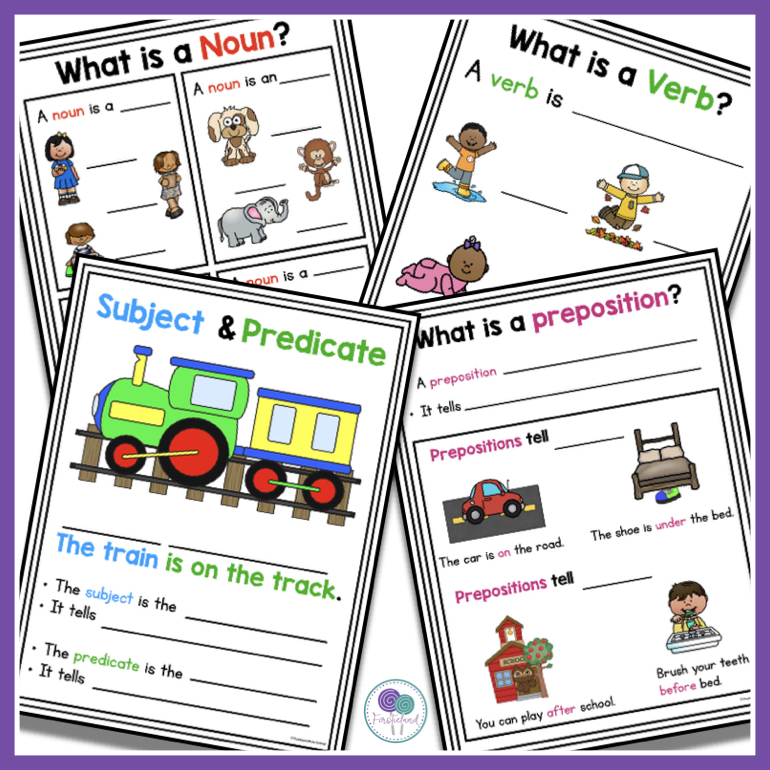
Storing Your Charts
Storing your anchor charts can be a challenge as the year moves forward. You may have too many charts to display at one time. But remember, you don't want too many charts.
Anchor charts should be for the foundational skills you're teaching throughout the year, not every single concept taught.
I have a wire strung across my room and I hang my anchor charts on this with clothespins. Once we have created our chart, I'lll hang it on the wire and this is where it will remain all year. It's not a good idea to move your charts around because students will refer to them over and over. They should know where the chart is in the classroom so they can find it easily.
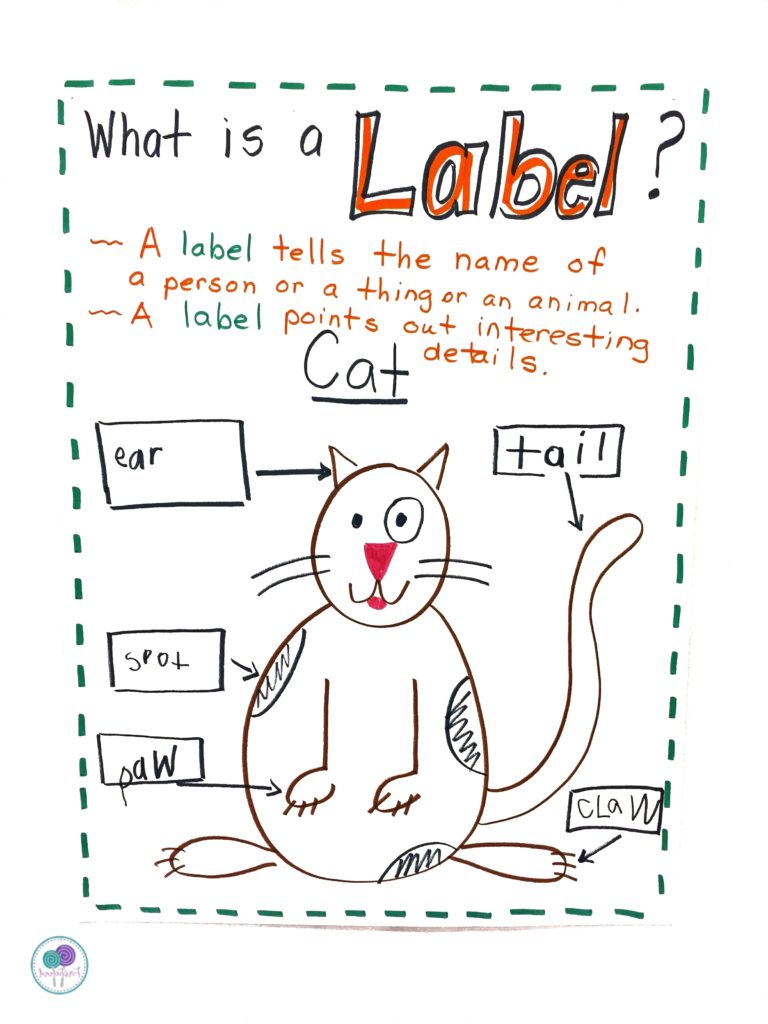
I like to keep my charts in full view for students to look at any time. This is what makes them so useful and such a great learning tool. But some teachers simply don't have the space to keep all of their charts hanging up.
Some teachers attach a pants hanger to the chart and hang them on a chart stand or hook in their classroom. This takes up less space, but the charts are still accessible any time you need them.
Another way to store your charts if you are limited on space, is by taking a photo of the completed chart and making a photo album or binder of all your anchor charts. Students can use this binder as reference as needed.
Using Anchor Charts With Your Students
Now that you have all these anchor charts, what do you do with them? The best way to use your anchor charts is by having your students help make them. This not only keeps your students engaged in your lesson, but when students are hands on involved in anything, they will remember it much more than if they simply watched you make the chart. Suddenly the skills become much more meaningful to your students.
Use Your Charts For Reference
Your students can use your charts for reference all through the year. When they are working independently and forget a certain skill, they can look to the anchor chart to help them with a worksheet or project. I can't tell you how many times I've asked a student a question at the carpet and noticed them look over at an anchor chart to help them before answering. I always praise students when I see them using an anchor chart. That's what they're for!
Classroom Rules and Procedures
Another way to use anchor charts is for your rules and procedures in your classroom. These charts are always posted in our classroom and we refer to them all year. If a student is breaking a classroom rule, I will say “Remember the green rule.” or “Are you following rule number one?”. Students know what I'm talking about because our charts are hanging for all to see every day, and we refer to them often.
Reinforce Past Skills
During the school year, you'll go over skills that you learned earlier in the year. I often pull down an anchor chart from the beginning of the year to review a grammar skill like nouns or verbs. These are skills we go over and over all year and our anchor charts help us in that review.
As we learn new things about a skill, we'll add to our anchor charts throughout the year as well. This keeps our charts important and engaging all year.
Now that you've got all the information on how to use anchor charts, it's time to get started! If you feel a little overwhelmed and not sure which anchor charts to begin with, take a look at my Grammar Charts. They'll get you started with all the first grade grammar skills you'll be teaching this year and include make your own anchor charts and ready to use charts. It also includes B&W versions of all the charts so students can make their own individual charts too!

